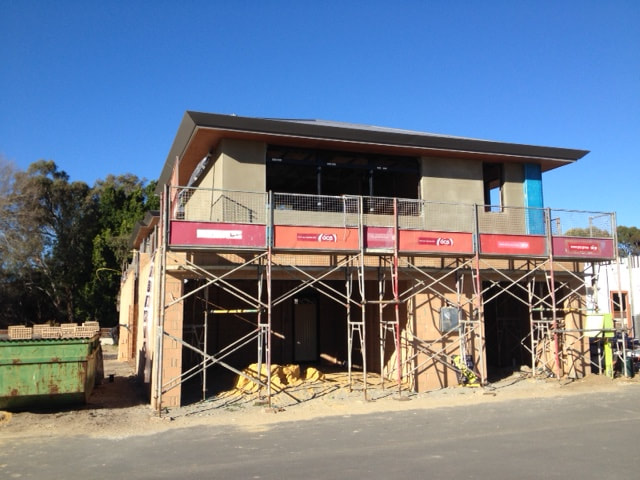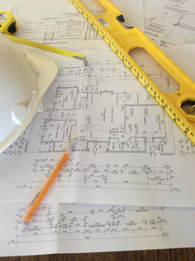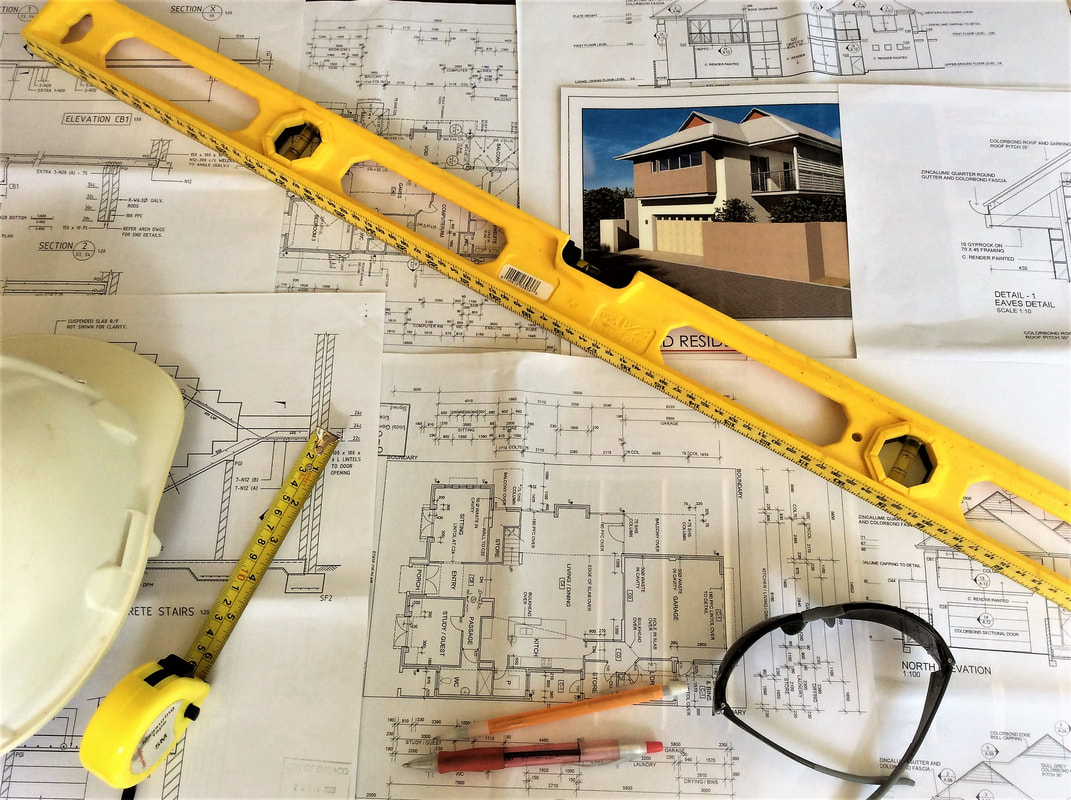 Generally when planning a house you’re faced with a number of conflicting forces which are, what you desire or want, what you actually need, what you can afford, what can be done or is allowed, and of course with a new family home you also have the opinions and needs of your partner and even the children. Seldom do these align perfectly, so most houses end up compromising on some of these items. For example, your family may be expecting another child and need to add another bedroom. At the same time you might want another bathroom, to renovate the kitchen and build another garage. However, you may only have sufficient money to build the extra bathroom and bedroom, but, possibly you won’t have sufficient space on the property for the additions. Somewhere there’ll need to be compromise. Unfortunately, sometimes this compromise can lead to a bad house, where the compromise results in one force dominating the others – for instance, affordability drowns out everything else, so you end with a house that’s of poor quality and doesn’t satisfy any of your other needs or desires. Of course, there are usually other factors that come into play which also affect the final outcome. If the property is an investment property, to be sold or rented, then it’s important to consider what buyers and renters want as well as the available existing stock. If you’re planning to execute most of the construction work yourself then the amount of time you have available should influence the size and complexity of the project. The available materials, access routes to the property, as well as the site topography and existing vegetation will all influence decisions. In this chapter and the following chapters we’ll look at many of the considerations that can impact the final result of your new house. It’s important to take a pragmatic approach to planning projects. Projects that are poorly considered and ill-conceived can be expensive disappointments. It often leads to a house that you no longer want to live in and can’t find a buyer for. In fact some poorly managed projects that are started with great excitement can have far wider repercussions, even resulting in bankruptcy and family break-ups. What you think you want in the beginning should never be cast in stone. There may be reasons why the original envisaged project isn’t feasible, or not the best solution. By necessity projects should adapt and evolve as more information is considered. Indeed, it may even be wise to cancel the project should it become too expensive, or difficult. Even if you’ve spent money already, never be scared to cancel a project, or to move it elsewhere, when it becomes apparent that it’s not right. It’s far better to lose a small amount of money than end with a house that you’re not happy with, or one that’s going to cause you financial stress. Certainly, if you do all the preparatory homework and investigations as suggested in this book you will, if necessary, end the project before you’ve incurred too many costs. But changes made to the project by you, your designers or contractor, could indeed result in a project that’s better, cheaper to construct, less expensive to maintain, or one which has more amenities for minor additional costs which are still within budget. Although our first thoughts and project concept shouldn’t be cast in stone, and it may be necessary to deviate from these in the course of the project execution, it’s important to always refer back to those first concepts and ideas. Regrettably, as projects evolve, in the excitement of new ideas, it’s easy to forget what you wanted and needed in the first place, then you end with a house which doesn’t actually satisfy what you were originally after. So, as changes occur to the project, always understand why those changes happened. Did the changes improve the project, were they ‘nice to haves’, maybe spur of the moment whimsies, or were they unavoidable? If the changes are unavoidable and they result in a project that isn’t suitable for your needs, then you may have to make the hard decision to cancel the project, or develop alternative strategies and solutions. For more valuable tips and advice read: Build and Renovate Your Home With Your Eyes Wide Open.  For more valuable tips and advice read: 'An Introduction to Building and Renovating Houses - Volume 1 Hiring Contractors, Managing Construction and Finishing Your Home' and 'Volume 2 Finding Your Ideal Property and Designing Your Dream Home' This is an extract from: 'An Introduction to Building and Renovating Houses Volume 2' by Paul Netscher. Available in paper or eBook from Amazon.com, Amazon UK, Amazon CA, Amazon AU and all online bookstores. To read more © 2018 This article is not to be reproduced for commercial purposes without written permission from the author.
0 Comments
 We usually require some expert help to design our new house or large renovation. Architects can fulfil many functions, but importantly they can interpret your requirements and vision into construction plans and drawings. These plans and drawings are usually a requirement for construction permits. The drawings indicate how the house should be constructed. What you should consider when choosing a designer You should consider the following when selecting a designer:
It's important to select a designer that's right for you, one that you can work with, one that understands what you are looking for, someone that understands the local codes and conditions, and one that won't break your budget. Importantly you need to understand what you are paying for - you don't want to pay additional and unexpected costs which you haven't allowed for. You don't want unpleasant extra costs for items you thought were included. Not every designer will be able to interpret the home of your dreams. Selecting the wrong designer could be expensive and result in your home not meeting your expectations.  For more valuable tips and advice read: 'An Introduction to Building and Renovating Houses - Volume 1 Hiring Contractors, Managing Construction and Finishing Your Home' and 'Volume 2 Finding Your Ideal Property and Designing Your Dream Home' This is an extract from: 'An Introduction to Building and Renovating Houses Volume 2' by Paul Netscher. Available in paper or eBook from Amazon.com, Amazon UK, Amazon CA, Amazon AU and all online bookstores. To read more © 2018 This article is not to be reproduced for commercial purposes without written permission from the author.  In the previous article Steps to constructing your new house - Part 1 I discussed some of the steps required when constructing a new house. This article continues from that article. More steps to constructing your new house
In future articles I will discuss many of these steps in detail. Good planning and diligently following all the steps will ensure a successful project. For more information purchase my book: Build and Renovate Your Home With Your Eyes Wide Open. It provides invaluable advice which will save you money, help you avoid common mistakes and ensure your project is a success.  For more valuable tips and advice read: 'An Introduction to Building and Renovating Houses - Volume 1 Hiring Contractors, Managing Construction and Finishing Your Home' and'Volume 2 Finding Your Ideal Property and Designing Your Dream Home' This is an extract from: 'An Introduction to Building and Renovating Houses Volume 1' by Paul Netscher. Available in paper or eBook from Amazon.com, Amazon UK, Amazon CA, Amazon AU and all online bookstores. To read more © 2018 This article is not to be reproduced for commercial purposes without written permission from the author. |
AuthorI’m a construction professional, author of several successful construction management books, and a home owner. I’ve made mistakes in construction management, I’ve seen others make mistakes, but importantly I’ve had multiple successful construction projects and I’ve learned from the mistakes. I want to share these lessons and my knowledge with you. Also available from:
Amazon Au, Amazon DE, Amazon ES, Amazon CA, Amazon IT, Amazon FR, Amazon NL, Amazon India and 'An Introduction to Building Houses - Volume 2 Finding Your Ideal Property and Designing Your Dream Home'
Archives
July 2024
CategoriesWe welcome genuine comments, especially comments that add additional information to the subject matter in the article. We however reserve the right to remove inappropriate comments, which includes comments that have nothing to do with the subject, comments that include inappropriate language, and comments that are an advertisement for a product or company, or which include an advertising link. Comments must be in English. We will not enter into discussion on why a particular comment was removed.
|


 RSS Feed
RSS Feed


